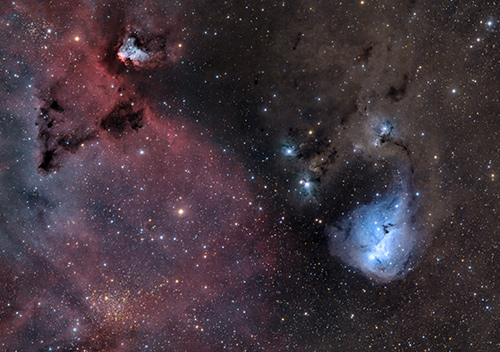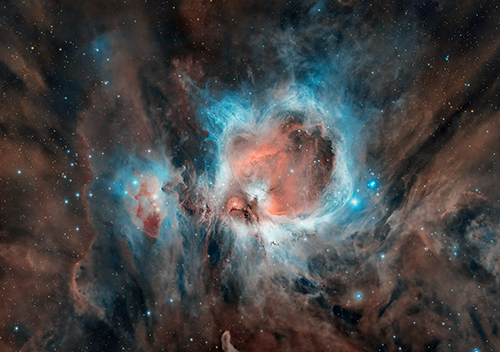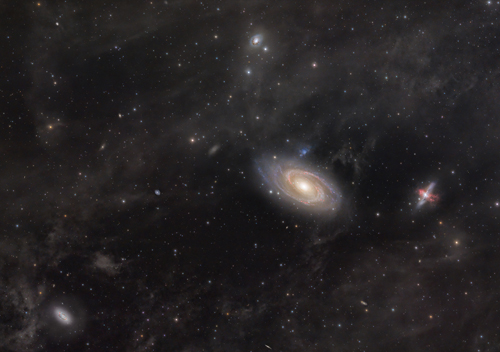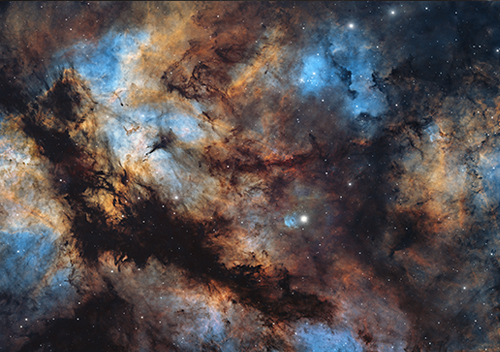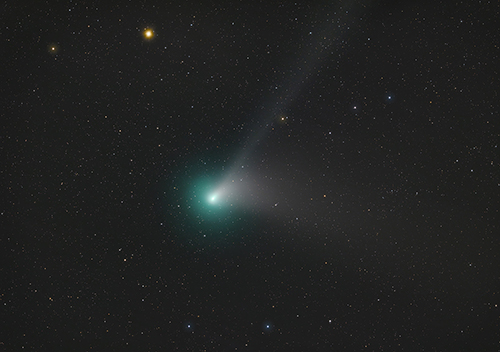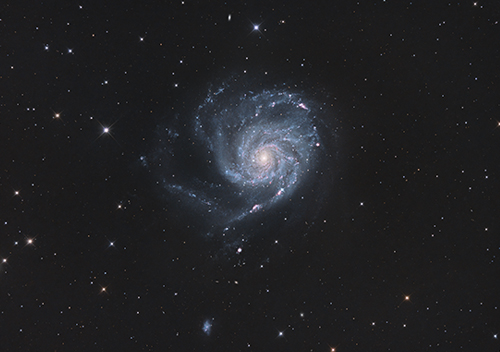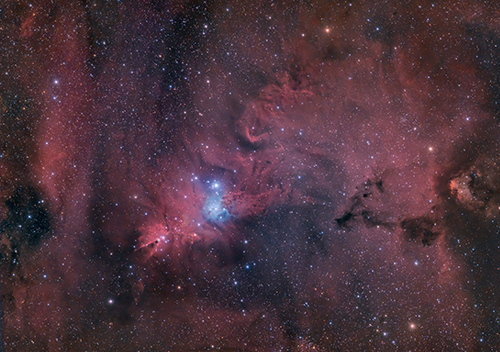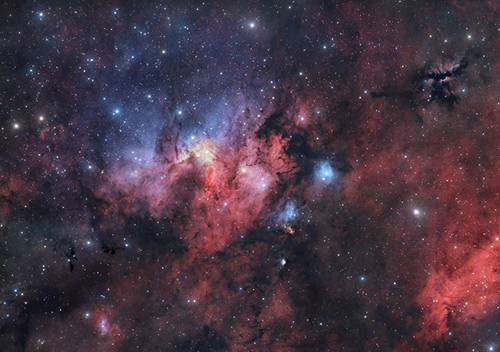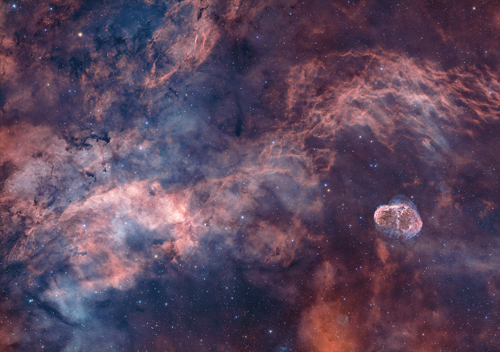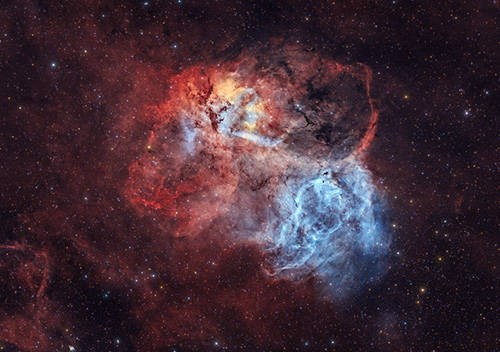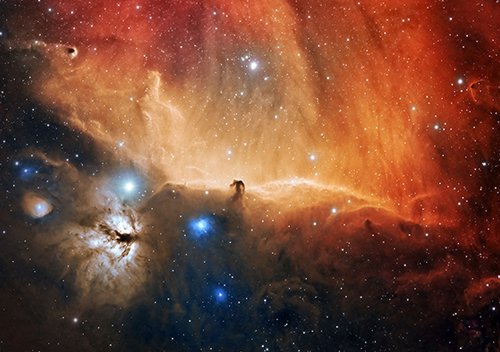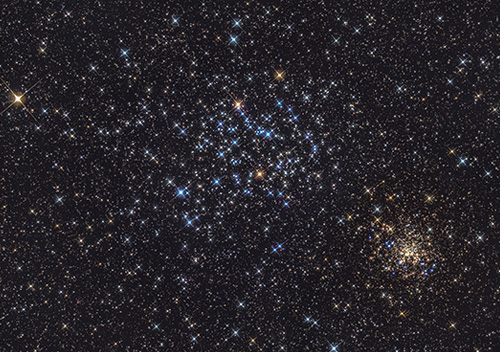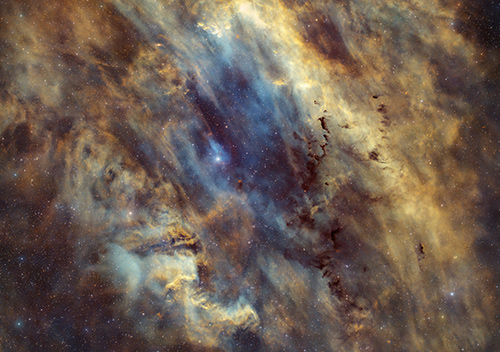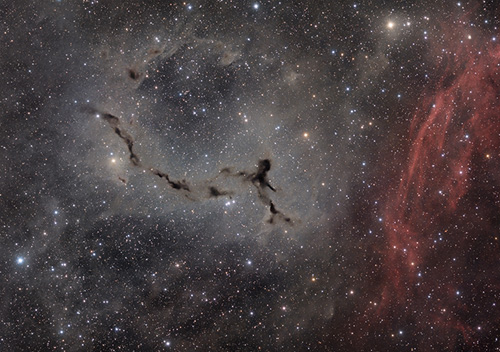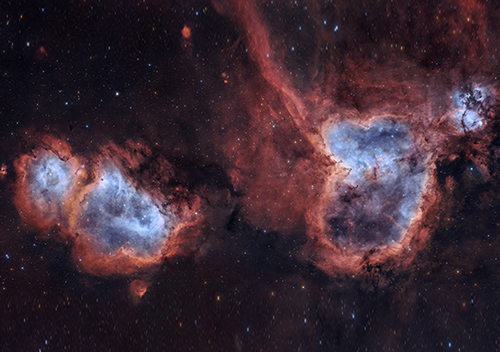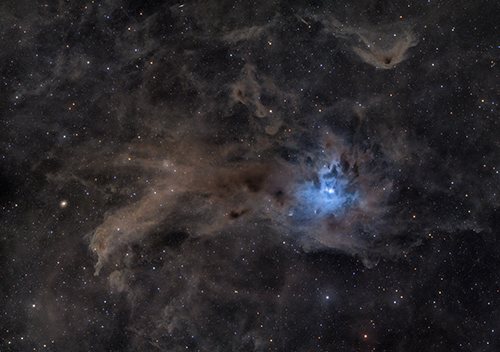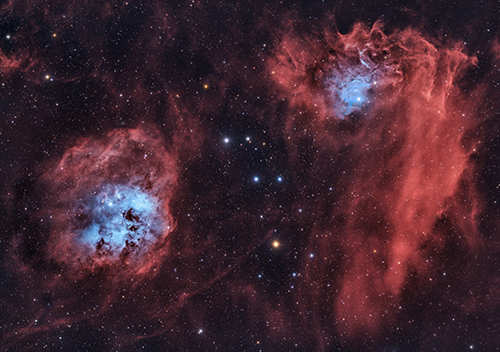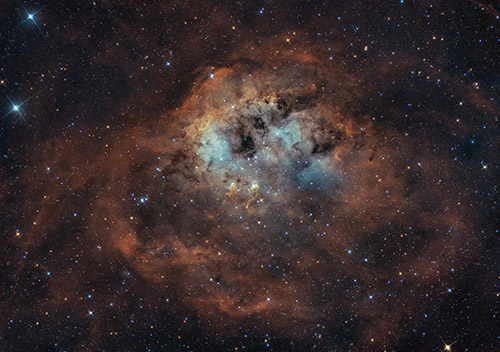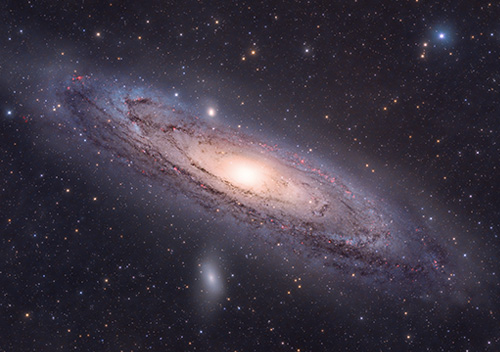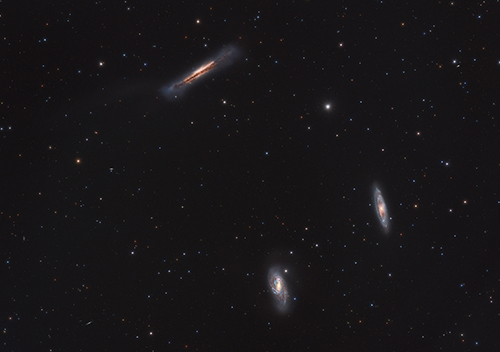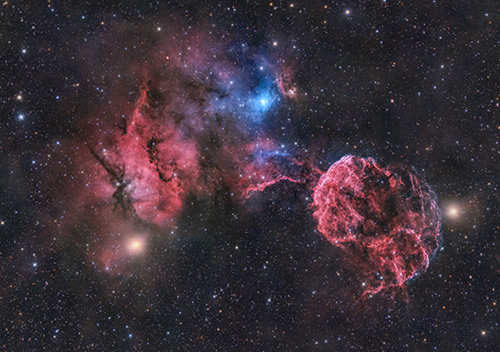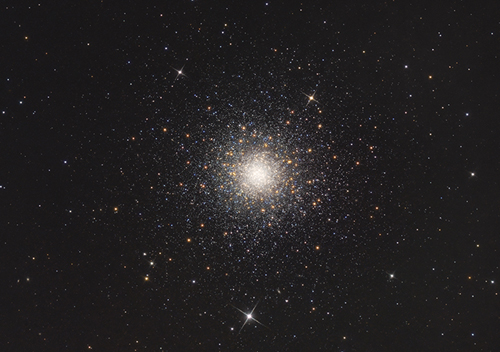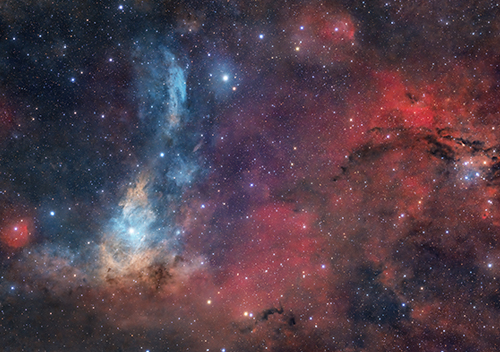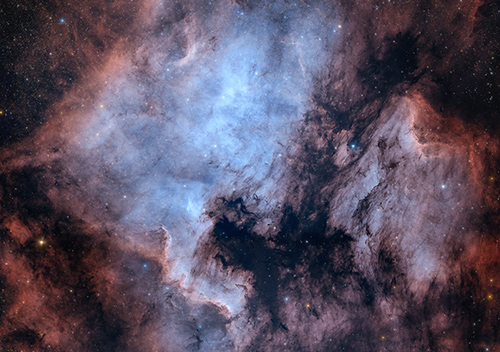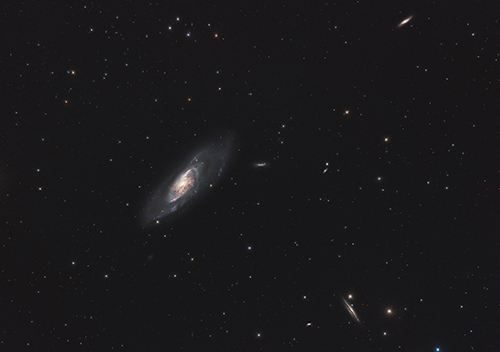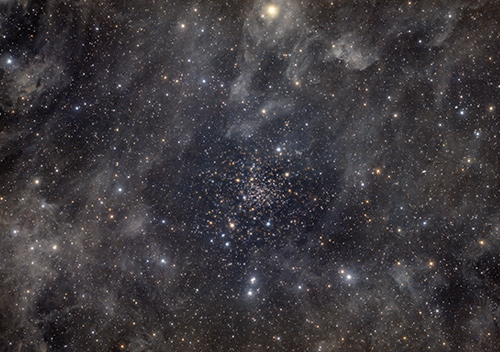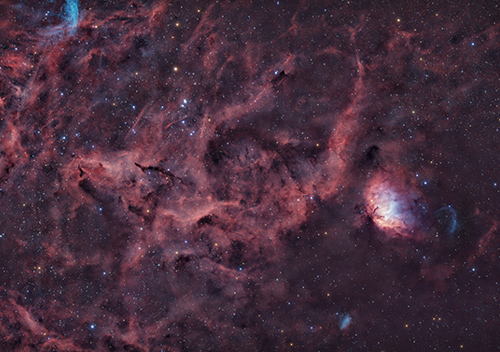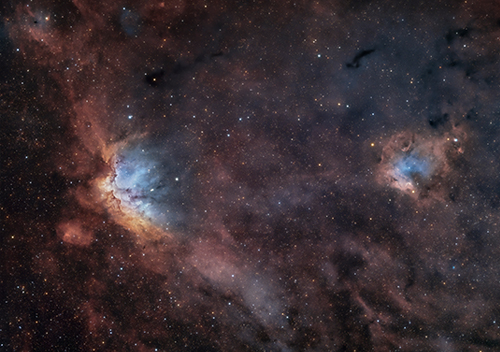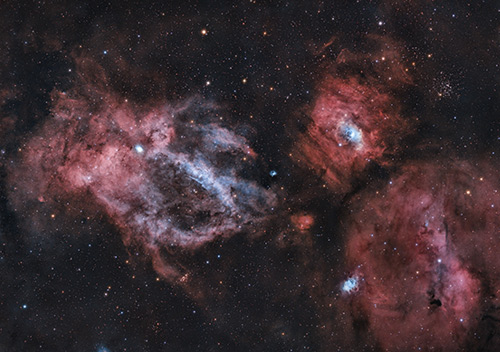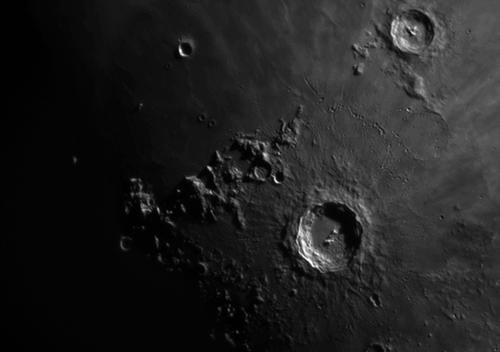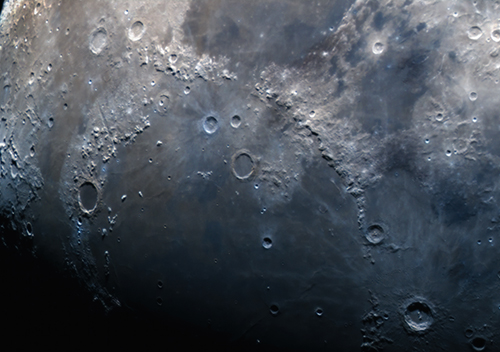NNGC 4725 is a so-called “peculiar” galaxy because, despite having a spiral structure, it has only one prominent spiral arm – a rare feature. It lies about 41 million light-years from Earth and belongs to the Coma I Galaxy Group. At its core, it hosts an active galactic nucleus, indicating the presence of a supermassive black hole. Its asymmetrical structure may be the result of past gravitational interactions with neighboring galaxies.
NGC 4747 is a smaller barred spiral galaxy in the same region. It lies close to NNGC 4725 and shows signs of strong gravitational interaction – likely with that very neighbor. These interactions have led to prominent tidal structures and regions of active star formation.
NGC 4712 is the least well-known of the three galaxies. It is a spiral galaxy located farther away than the other two, at an estimated distance of around 200 million light-years. In comparison, it appears smaller and dimmer but shows a classic spiral structure. It has not yet been studied in as much detail.







